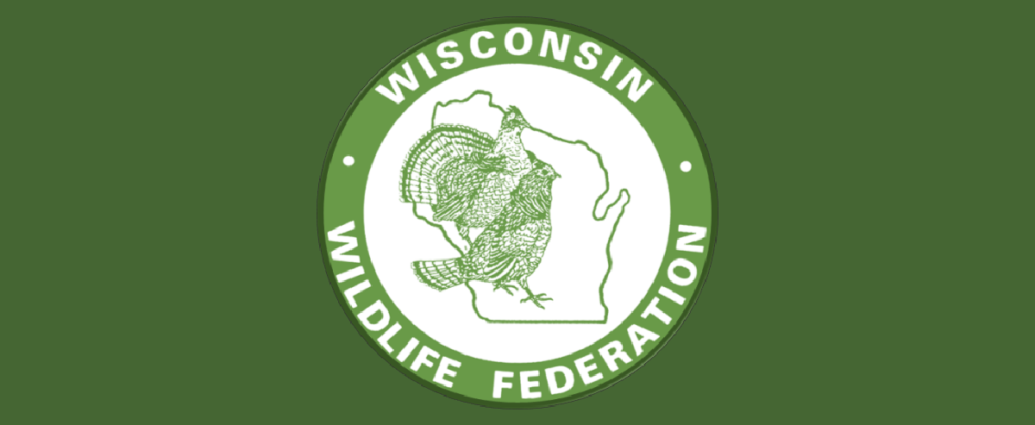Natalie Weeks
WiWF 2021 Conservation Educator of the Year
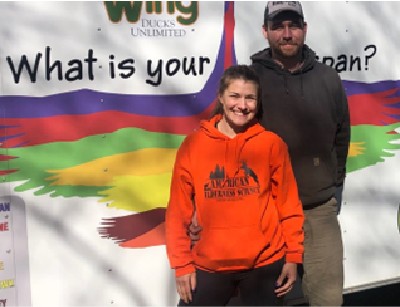 Teacher Natalie Weeks has demonstrated successful education techniques and accomplishments using conservation of natural resources in her outstanding environmental education efforts.
Teacher Natalie Weeks has demonstrated successful education techniques and accomplishments using conservation of natural resources in her outstanding environmental education efforts.
Natalie has gone above and beyond her normal responsibilities in the Random Lake, Wisconsin school district. This year, she outperformed her prior year accomplishments and set new standards and expectations.
Students, parents and school administrators have come to expect natural resources conservation and outdoor skills to be part of her lessons ever since she returned from summer training at the American Wilderness Leadership School in Jackson Hole, Wyoming. A few years ago, Natalie was one of a handful of teachers from Wisconsin selected to attend the school for advanced training.
She returned from AWLS with heightened energy and enthusiasm for sharing the outdoors with families, co-workers and organizations in her community. Again, this year, she continued to use nature-based education and experiential outdoor skills learning opportunities to connect students with natural resources, as well as instill a conservation ethic that goes beyond understanding and into active engagement in the outdoor lifestyle.
Natalie launched a student conservation club that successfully recruits young people to become hunters, shooters, anglers and more. She had introduced them to trapping, target shooting, archery and other activities. Often, she invests her own money and donates her time after hours to make sure students have these outdoor skills opportunities.
However, she has also reached out to the Random Lake community and other conservation groups and businesses in southern Wisconsin. By engaging their support, she has reactivated and retained adult hunters, trappers and anglers, who re-engaged because they want to help her help students and families.
That R3 success alone would be worthy of the WWF Conservation Educator of the Year honor, but she didn’t stop there.
Natalie founded, launched and organized the Random Lake Conservation Fair, which will continue every year to bring students and conservation partners together. The event includes exhibits, seminars and activities that also raise funds for the student conservation club. It also introduces local organizations to prospective new members and makes the students comfortable and familiar with those organizations and their ranges, club grounds, member benefits, scholarship opportunities and more. It also introduces local businesses to prospective new customers and potential new employees.
Media coverage of her education programs and activities has generated positive publicity for conservation and helped portray a positive image of hunters, anglers and trappers.
All of her accomplishments were recognized nationally when Natalie was invited to become a summer instructor at the American Wilderness Leadership School in Wyoming. She trained educators so they can teach conservation in their school districts across the nation for the rest of their careers. The AWLS invitation is another testament to her skills, energy, intelligence and an outgoing personality that make her stand out among Wisconsin educators and her peers nationwide.
On top of all that, in the spring of 2021, Natalie and her husband also personally drove nearly three hours each way to pick up for the Conservation Fair the Touch of the Wild education trailer so that students and parents would have that little something extra to make this year’s experience that much better. She didn’t need to donate her free time to do that, but it shows how Natalie Weeks goes the extra mile for her students and for the conservation cause consistent with the WWF mission.
Paul Smith
WiWF 2021 Conservation Communicator of the Year
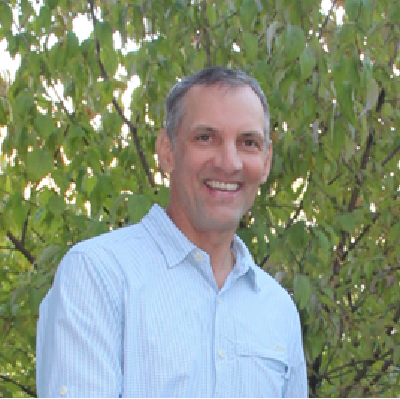 Beyond being an avid outdoorsman who enjoys spending time among Wisconsin’s natural resources with people of all walks of life, Paul is an award-winning journalist who professionally covers conservation and the outdoors for The Milwaukee Journal Sentinel.
Beyond being an avid outdoorsman who enjoys spending time among Wisconsin’s natural resources with people of all walks of life, Paul is an award-winning journalist who professionally covers conservation and the outdoors for The Milwaukee Journal Sentinel.
His level-handed coverage informs readers of that newspaper, but also its sister publications as well as its website visitors and social media followers. With his photo and video skills, Paul adds to his clear and thoughtful features and columns that cover all things outdoors.
Whether it’s timely reporting of environmental issues, regulation changes and legislative matters or feature stories about hunters, anglers, birders, trappers and others, Paul has a way of conveying the essence of his subjects. He gets to the heart of the matter. He explains the most complex facts in easy-to-understand language that creates a more informed public. And he describes outdoor pursuits in a way that helps his audience virtually see, smell, hear, taste and touch the subject, motivating them to want to follow in his footsteps and experience the outdoor activity or destination for themselves.
Last year, more than ever, he showcased the healthy benefits of time spent outdoors.
Paul also has been recognized by his peers locally and nationally for his work and his trusted guidance. It can be seen in the many awards he has received for his writing and photography. His award-winning work has won regional and national honors. Above and beyond his work, Paul has been selected by his peers to serve on the Board of Directors of professional organizations like the Outdoor Writers Association of America. They, too, recognize and appreciate his contributions on so many levels.
Paul Smith has demonstrated outstanding conservation efforts and created a high degree of public awareness of the importance of natural resources conservation.
When he learned that family obligations would prevent him from being here in person, he wanted people to know that it does not diminish his gratitude for being selected. He also said, “I have high respect for the WWF and its role over the decades as a leader in conservation issues in Wisconsin.”
He added, “I remember, too, the role WWF played to take over the MacKenzie Center when the DNR was preparing to shutter it. The WWF saved the facility, plain and simple, and it remains open today thanks to your organization. The WWF recognized MacKenzie as a valuable asset worth fighting for. And you succeeded in keeping it alive. I, and all Wisconsinites, thank you for that. I’ve been an outdoors writer for a daily Wisconsin newspaper since 1994. The MacKenzie Center story is just one example among hundreds I’ve written that included or was based on the WWF. I thank the WWF’s individual members and clubs for working with me and sharing their stories over the years. I look forward to more opportunities to work on issues and stories in the years to come. For now, please accept my sincere thanks for this award.”
Natural Resources Foundation of Wisconsin
WiWF 2021 Conservation Organization of the Year
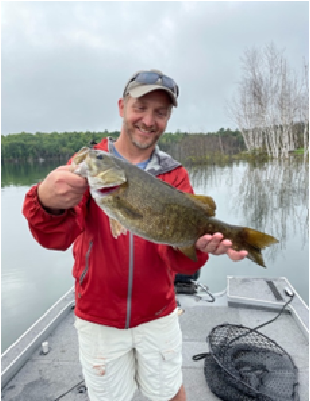 Under the leadership of Executive Director David Clutter, NRF continues to make outstanding contributions to conservation and significant natural resources issues in Wisconsin.
Under the leadership of Executive Director David Clutter, NRF continues to make outstanding contributions to conservation and significant natural resources issues in Wisconsin.
This nonprofit organization is a unique hybrid, serving like a community fund and a “friends” group, as well as a charitable foundation, while providing educational programs, endowments, and conservation grants.
Working in every county, NRF connects people to meaningful opportunities that make a lasting impact on Wisconsin’s lands and water, fish and wildlife, and the next generation of conservationists.
Partners, media and others have come to know and appreciate NRF through its conservation projects and educational programs, plus its Grants, Field Trips, Birdathon and Wisconsin Conservation Endowments.
NRF GRANTS help cover costs of on-the-ground conservation work, research, habitat restoration, water quality monitoring, trail building, rare plant preservation, and other projects that benefit Wisconsin’s lands and waters. NRF also raises and disburses special purpose grants.
NRF provides funding that gets youth and adults outside and engaged with the natural world, including pollinator gardens, school field trips, community events, citizen science programs and more, all across Wisconsin.
NRF invests in grassroots conservation and education with grant programs like the C.D. Besadny Conservation Fund for projects that have measurable outcomes and leverage other resources and partnerships, plus engage and impact underserved communities in Wisconsin.
NRF also has the Go Outside Fund and Teachers’ Outdoor Environmental Education Fund to provide critical funding to schools. NRF shares WiWF’s understanding that nature provides tremendous physical, mental and spiritual health benefits for people of all ages. It recognizes that children today spend less than one percent of their time outside. The GOF and TOEEF pay for field supplies, transportation, substitute teachers and other costs that help get students outside for nature-based educational activities.
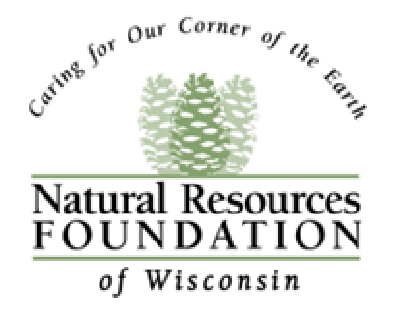 NRF FIELD TRIPS offer unique opportunities to explore Wisconsin’s lands, waters. Led by expert professional naturalists, trips provide great up-close experiences and information about the critical conservation work being done to protect those resources.
NRF FIELD TRIPS offer unique opportunities to explore Wisconsin’s lands, waters. Led by expert professional naturalists, trips provide great up-close experiences and information about the critical conservation work being done to protect those resources.
Before the pandemic, NRF every year offered more than 200 field trips across Wisconsin to help bring the public closer to nature and the environment. It found ways, virtually and in-person with safety protocols, to still offer more than 150 field trips despite the pandemic. Trips create more informed citizens who increase their donations of time, talent and treasure in support of conservation.
NRF WAYFARERS engages young professionals with paddling, hiking, climbing, biking and other adventures for the 20- and 30-something age group. Scientists, ecologists, and naturalists help lead these outings.
NRF GREAT WISCONSIN BIRDATHON engages individuals and communities to raise support and awareness for birds in Wisconsin and conservation of their habitat. It’s like a walk-a-thon fundraiser, but instead of logging miles, participants log bird sightings to raise funds.
NRF’S $10 MILLION WISCONSIN CONSERVATION ENDOWMENT provides individuals and organizations the opportunity to leave a legacy and create funds to support a favorite conservation organization, property, waterway or species; and to support conservation education.
NRF has stepped up again most recently in support of the Recovering America’s Wildlife Act, helping to build the Wisconsin Coalition for RAWA, generate communications, and lighten WiWF’s workload as the coalition’s leader.
All of these conservation successes put the hybrid NRF in a league of its own.
Lindsey Long
WiWF 2021 Wildlife Conservationist of the Year
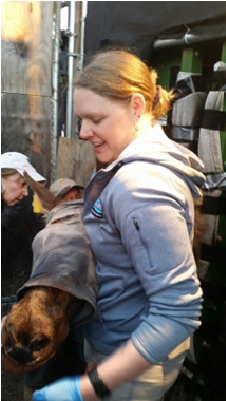 That’s an elk in this photo of Lindsey Long, the DNR’s lead veterinarian for the elk program in Wisconsin, along with other wildlife.
That’s an elk in this photo of Lindsey Long, the DNR’s lead veterinarian for the elk program in Wisconsin, along with other wildlife.
Between coordinating the process and participating in the trenches to get it done, she has been subjected to conditions that take courage and perseverance to complete her work, said Federation VP Kevyn Quamme, who nominated her.
These conditions have been complicated by the COVID protocols over the last year, so the work that needs to be done has less help and hands to do it.
Not only did she accomplish a huge task in the elk herd success and relocation efforts, but Lindsey was also called on to serve on the planning committee for management plans at the same time. She sits on the committees and seems to always be prepared for questions and concerns from the public.
The last three years have been taxing for the DNR and what she does. Somehow juggling the elk work, new grouse management plan, coordinating the three-state West Nile Virus three-year study, working with Missouri on the grouse relocation plan, and a number of other projects, even including CWD work, Lindsey does it with cool, calm, straight-forward demeanor.
While somehow keeping her eye on the ball, she keeps all the balls in the air, said Quamme, who was impressed by her insight, matter of fact work ethic, and amazing level of knowledge and understanding of what she needs to do.
Lindsey is an example of what a conservationist, scientist, and wildlife manager should be in order to do the best work for the resource.
She has had a significant role in some very important and successful work on wildlife here in Wisconsin. And she is routinely sought out by others in the research and wildlife profession due to her knowledge and expertise.
Lindsey oversaw all veterinary needs in the Kentucky/Wisconsin elk translocation. That included training staff, navigating the permit process, working with multiple agencies, all vet care of animals, and post-release needs for the elk.
This was very challenging over five years. The track record of meeting some extremely challenging situations with few losses of elk and no significant injuries to staff is testament to her great work. More elk are now in Wisconsin for future generations, and Lindsey is hugely responsible for that.
She was also very important to the Southwest Deer CWD & Predator Research Project. Lindsey is talented and dedicated, working tirelessly for all of us. She is highly respected and appreciated. The Federation agrees that Lindsey Long is worthy of recognition for her efforts and accomplishments.
Dave Giordano
WiWF 2021 Land & Water Conservationist of the Year
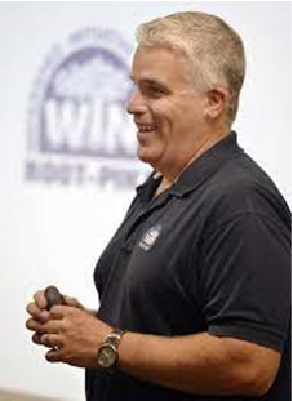 As Executive Director of the Root Pike Watershed Initiative, Dave Giordano has been working for more than a decade to improve the southeastern Wisconsin rivers flowing
As Executive Director of the Root Pike Watershed Initiative, Dave Giordano has been working for more than a decade to improve the southeastern Wisconsin rivers flowing
into Lake Michigan.
Known by its acronym Root Pike WIN, the initiative was facing a mission and financial crisis before Dave took over about five years ago. Since then, he has returned the organization to financial stability, formed a highly qualified board of directors, hired competent staff members, and completed many important projects in the Root River, Pike River, and Oak Creek watersheds.
Projects have included wetlands restorations, stream bank restorations, food control measures and restoration of environmental habitats for pollinators, deer, small mammals, amphibians, turtles, fish and insects throughout Milwaukee, Racine and Kenosha Counties.
Dave has obtained grants from many public and private organizations to complete these projects. Most recently, he secured funding to restore 120 acres of the UW-Parkside property, providing better habitat for Rusty Patch Bumble Bees, deer and small mammals. Almost $1 million is being invested in cooperation with UW-Parkside.
In addition to being the primary fund-raiser and grant writer, Dave supervises a staff of five full-time and part-time employees, plus numerous volunteers.
He works with local municipalities and successfully obtains their support for projects in the area. People who know him praise Dave for many qualities and attributes, including his excellent interpersonal skills that facilitate collaboration.
Among his recent accomplishments, projects include:
- Creation of a mile-long, 300-foot-wide environmental corridor along the Lamparek Ditch leading to the Pike River;
- Restoring a 40-acre wetland in Cliffside Park, and Lake Michigan’s clay bluffs;
- Flood retention and 5.5 mile stream restoration on Pike River’s South Branch;
- Fortification of the shoreline and repairs to the fish rearing pond at the mouth of the Pike River;
- Restoration of a highly eroded ravine in 20 acres of wetlands along the Root River in Racine’s Colonial Park;
- Restoring UW-P’s 210 acres of Pike River wetland and forest in Kenosha; and
- Public outreach addressing road salt usage, costly turf maintenance, attracting flocks of resident geese, erosion, etc.
Federation member Roger Chernik nominated Dave and noted that these are just some of the examples of Giordano’s work that is worthy of this top honor.
Dr. Mike Demchik
WiWF 2021 Forestry Conservationist of the Year
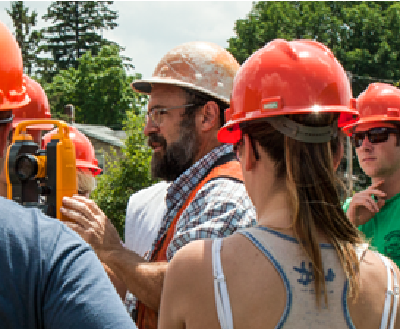 Michael Demchik has been helping the Wisconsin Wildlife Federation, DNR, Wisconsin Wetlands Association, the Village of Plover, and their partners develop restoration plans for wetland, floodplain, and forest habitats in the Little Plover River watershed of Central Wisconsin.
Michael Demchik has been helping the Wisconsin Wildlife Federation, DNR, Wisconsin Wetlands Association, the Village of Plover, and their partners develop restoration plans for wetland, floodplain, and forest habitats in the Little Plover River watershed of Central Wisconsin.
He continues to impress fellow conservationists not only with his knowledge of the ecology, management, and restoration of native forest habitats in the area, but also with his undying enthusiasm and commitment to forest health.
Mike is one of those rare individuals who eats, sleeps, and lives forest management and restoration. A walk in the woods with Mike involves discussions of landscape and watershed context, soils, hydrology, ecological and economic interactions, social milieu, and trees. He will explain historic conditions, the changes that have occurred to an area over time, and measures that can be taken to bring back historic conditions in a modern context and in a cost-effective manner. Though he is deeply comfortable using the latest technological gadgets (he carries his iPad loaded with aerial photos, etc. with him at all times), he is also a man with dirt under his fingernails. He can work a chainsaw and most other forest implements as well as anyone.
Mike’s organizational skills stand out in a crowd. Whenever someone needs information about restoration techniques, budget, or logistics for a plan or funding proposal, Mike swiftly delivers detailed information in a format that can be seamlessly included. Mike understands that all the theory in the world will do no good if it cannot be implemented efficiently on the ground. The sheer amount of restoration work he conducts in his private business and with his students is a wonder to behold.
Mike’s undergraduate students come away with not only a degree in forest management, but with real-world experience applying techniques that will be useful as they begin their careers. He speaks with pride about his students, and you can see that his dedication to training the future forest stewards of Wisconsin (and the nation) is his greatest joy.
Travel around Wisconsin and you will find that many of those in leadership positions in forest management are former students of Mike Demchik.
Mike’s level of expertise, joy, and commitment to forest health and restoration stand out as extraordinary and worthy of the Federation’s Forestry award..
Mike Disher
WiWF 2021 Conservation Warden of the Year
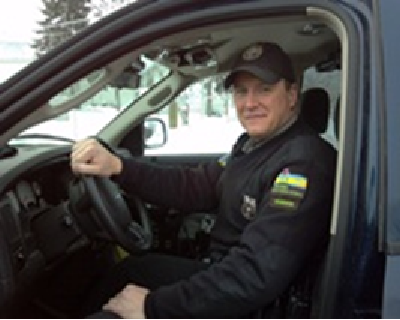 Warden Mike Disher is assigned to Calumet County, which encompasses all of Calumet County and the eastern shore of Lake Winnebago (Wisconsin’s largest inland lake). Mike’s station has both urban and rural areas including both the Killsnake and Brillion State Wildlife Areas with over 11,000 combined acres. In addition, Mike has High Cliff State Park in his area, which is one of Wisconsin’s busiest and most visited parks. The station also includes the Sturgeon spearing Capitol of the world (Stockbridge). Mike has built an outstanding law enforcement program in his area by focusing on natural resource education, community involvement, and enforcement.
Warden Mike Disher is assigned to Calumet County, which encompasses all of Calumet County and the eastern shore of Lake Winnebago (Wisconsin’s largest inland lake). Mike’s station has both urban and rural areas including both the Killsnake and Brillion State Wildlife Areas with over 11,000 combined acres. In addition, Mike has High Cliff State Park in his area, which is one of Wisconsin’s busiest and most visited parks. The station also includes the Sturgeon spearing Capitol of the world (Stockbridge). Mike has built an outstanding law enforcement program in his area by focusing on natural resource education, community involvement, and enforcement.
Mike balances enforcement efforts between fish and game, recreational vehicles, recreational property, commercial, and environmental. He uses a high level of discretion.
Mike spends the majority of his enforcement time patrolling and responding to fish and game related complaints. He evenly distributes his enforcement activity based on the seasons and is well versed in all fish and game activities. Mike’s station is unique in that there is also a sturgeon spearing season on Lake Winnebago involving thousands of spearers. He is recognized for his expertise with this specific activity. Mike is also well known for his trapping enforcement efforts. He addresses both the recreational enforcement and the commercial enforcement of natural resource use. Mike’s outstanding work in this area is shown by some of his highlighted cases during the past fiscal year below.
- Assisted Investigation Team with Sturgeon Roe Cases including conducting numerous interviews and helping with a search warrant.
- Apprehended two crossbow hunters hunting deer without license and in possession of methamphetamine.
- Apprehended a hunter shooting protected birds while waterfowl hunting.
- Apprehended the same angler two times fishing during revocation.
- Apprehended multiple violators for illegal baiting (deer/turkey)
Mike’s close working relationships with environmental staff has made it possible to resolve environmental complaints including manure spills, wetland fills, waterway violations; un-permitted ponds, hazardous waste, and open burning complaints. Mike usually tries to work with program staff and subjects to resolve situations without requiring enforcement action.
Mike’s vast experience, attention to detail and broad knowledge makes him frequently consulted by his team, region, wardens throughout the state, superiors and other program staff for his expertise. Mike is always willing to help another warden, another program, or the public.
Mike is superb investigator and recognized across the state. He is often consulted by coworkers involved in complex investigations because of his years of experience, attention to detail, vast knowledge, analytical mind, thoroughness, historical perspective, etc. Mike’s uncanny ability to stay organized in his work life greatly assists him in his investigations. Mike is a perfectionist and undoubtedly one of the most thorough and prepared wardens to work in the field.
Mike is recognized as a leader in natural resources throughout the community and his law enforcement program is built based on the community wardening philosophy. Mike is very involved with the local schools, law enforcement agencies, and civic groups in his area, and participates in numerous career days and school talks throughout the year. Mike works closely with local conservation clubs and attends youth conservation days at multiple clubs. Mike participated in fishing events for kids over the years, to include; clinics in Sherwood and New Holstein. Mike participates in the annual Law Enforcement Night Out event, which is well attended. Examples include the following connection to natural resources: Conservation Congress Annual Spring Hearings (where he serves as Hearing Officer), Calumet County Sportsman’s Alliance, Oxbow Sportsman’s Club, and Brillion Sportsman’s Club, town officials, local store owners, farmers, local law enforcement, safety education instructors, other DNR program staff, and USFWS staff, Mike works cooperatively with all members of his community and is able to staff programs he participates in by having these community relationships.
A high priority for Mike has been promoting safety education programs and he has managed to build a relationship with all the DNR safety instructors in his area. Mike continues to make safety course participation a main focus of his warden program and enjoys going to speak at all the courses (ATV/UTV, Snowmobile and Boating) in his area as well as routinely filling in for neighboring wardens at their safety classes. Mike attended multiple outdoor youth and outreach events and talks throughout the year. In 2015, Mike started a Learn-To-Trap program, paired with a Trapper Education Course, and served as the lead instructor. During this time, Mike was able to recruit and certify a new lead trapper education instructor to take over the program.
Mike contributes a great deal of energy into the training program for the bureau. Mike has served as a field training officer (FTO), academy instructor for both the DNR and WI State Patrol, and instructor for property enforcement scenarios which have influenced so many in the BLE. Mike’s commitment to advancing the warden service shows in his interactions with the team and surrounding field wardens as well. Mike has served on multiple bureau committees over his tenure; including, Strategic Planning Committee, Equipment Committee and the Vehicle Marking Committee (2019 /2018). Mike also serves as a background investigator assisting in the completion of one new hire background investigation. Mike is available at a moment’s notice to respond to calls for service and to assist other wardens. Mike participates in nearly all team initiatives and group checks and planned multiple group checks throughout the year. It’s no wonder that DNR Law Enforcement leaders nominated him for the Federation’s top Warden honors.
Don Buerger
WiWF 2021 Hunter Safety Instructor of the Year
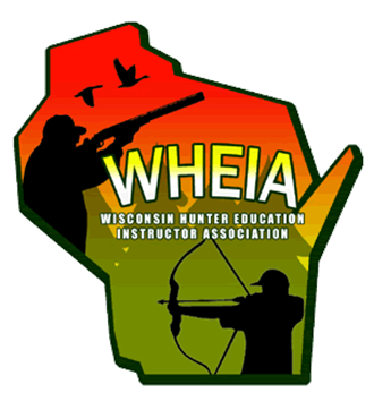 Don Buerger has been a hunter safety instructor for 29 years. He started by helping out with Hunter Education Classes in 1988 and became certified in 1991. He has been the lead instructor for classes at the Izaak Walton facilities in Fond du Lac. He has been an active hunter all his life, hunting small game, migratory waterfowl, upland birds and turkeys, and deer. Don has a strong background in guns and ammunition, reloading, ballistics, and gun safety which was one of the reasons he was recruited to be a hunter safety instructor back in 1988.
Don Buerger has been a hunter safety instructor for 29 years. He started by helping out with Hunter Education Classes in 1988 and became certified in 1991. He has been the lead instructor for classes at the Izaak Walton facilities in Fond du Lac. He has been an active hunter all his life, hunting small game, migratory waterfowl, upland birds and turkeys, and deer. Don has a strong background in guns and ammunition, reloading, ballistics, and gun safety which was one of the reasons he was recruited to be a hunter safety instructor back in 1988.
One of Don’s greatest skills is his ability to communicate and work with others. Besides being the lead instructor for the classes in Fond du Lac, he actively works with and helps other hunter safety programs in the area.
Over the years, Don has recruited some of the best instructors to work with him and brings their background and experiences into the classes which makes each class more meaningful for the students.
An example is the field day where the students get a chance to apply what they have learned in the classroom. The field day that Don has put together with the help and input from other instructors goes beyond what many other programs offer. Students get a chance to climb tree stands, cross fences, participate in mock pheasant hunts, deer drives, tracking blood trails, turkey hunting safety with blinds, shooting at targets, and other related activities. The parents are encouraged to observe their children going through the different activities. Don wants parents and students to continue supporting the safety practices learned through the classes and the field day.
There are a lot of good hunter safety instructors and hunter safety programs, and Don Buerger has done so much to expand on the basic requirement to make the Hunter Safety Program more meaningful to the students. A lot of the different things offered during the classroom training and field day come from the other instructors in the program because Don also provides an atmosphere that encourages input and a team effort.
Samantha Hammiller
WiWF 2021 Youth Conservationist of the Year
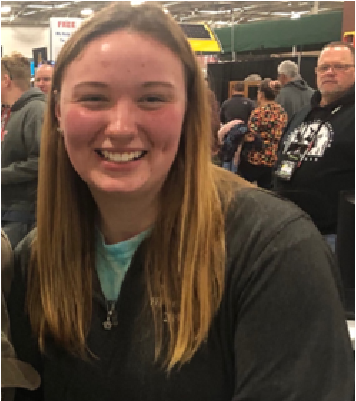 Filled with energy and positive enthusiasm for all things outdoors, Samantha Hammiller is the consummate volunteer.
Filled with energy and positive enthusiasm for all things outdoors, Samantha Hammiller is the consummate volunteer.
Burlington school teacher Trent Tonn recognized her leadership potential early on and mentored her throughout her high school years and recruited Sam to serve as delegate to the Wisconsin Youth Conservation Congress.
Sam’s accomplishments include being a youth ambassador for conservation. She reaches out to individuals and groups, including her peers as well as older people. We have seen her talk about hunting, fishing and the outdoors in the classroom one day and then formally address Rotary Club business professionals as she explains the workings of the Conservation Congress.
She does not hesitate to call on both young and old to participate in the democracy of the wild, urging them to attend spring hearings and other meetings where their voice can be heard.
Sam’s voice is definitely heard and respected by students and adults.
People are impressed by her depth of knowledge and understanding of natural resources, as well as her communication skills.
Trent Tonn said, “Sam helps teach younger kids about the outdoors, from assisting game wardens with a game feast, helping with deer processing, teaching ice fishing and pitching in on learn to hunt events.”
Sam says, “After being a student in these programs, if feels good to give back and help teach the younger generations about the outdoors, just as I have been taught.”
Pre-pandemic, she began participating in County Deer Advisory Committee meetings and WCC’s Outdoor Heritage & Education Advisory Committee. During the last year or so she has continued to participate virtually, including interactions with DNR and other natural resources professionals.
She has already begun developing her leadership style.
Business professionals might use buzz words like “Servant Leadership Techniques,” but Sam simply sees it as rolling up her sleeves, pitching in, and leading by example. It’s no surprise to see her stocking pheasants, aging deer, banding ducks, assisting biologists who collect lymph nodes from whitetails, or setting up a SnapShot Wisconsin trail camera in the field.
And now she has been selected into the WWF Conservation Leadership Corps’ 9th Class!
Joel Kitchens
WiWF 2021 Conservation Legislator of the Year
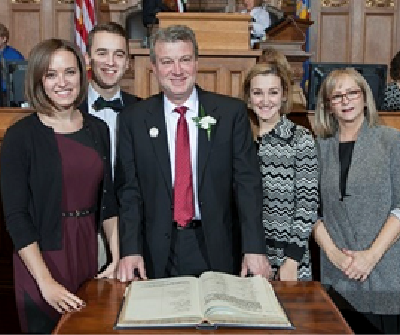 While representing the 1st Assembly District since 2014 and living in Sturgeon Bay, Representative Joel Kitchens has served on the Assembly Environment Committee for five terms and is currently its Chairman. During his tenure in the Wisconsin Legislature, Rep. Kitchens has been a strong advocate for the protection, enhancement and public use of natural resources.
While representing the 1st Assembly District since 2014 and living in Sturgeon Bay, Representative Joel Kitchens has served on the Assembly Environment Committee for five terms and is currently its Chairman. During his tenure in the Wisconsin Legislature, Rep. Kitchens has been a strong advocate for the protection, enhancement and public use of natural resources.
The following sample of his work in the Legislature demonstrates his efforts and successes:
- Chairman of Assembly Environment Committee;
- Served on the Speaker’s Task Force on Water Quality;
- Chaired the Nitrate Work Group;
- Worked with farmers and environmental groups to implement NR 151 rules for manure management that are specific to northeast Wisconsin;
- Wrote a bill banning plastic microbeads;
- Has been instrumental in reauthorizing the Knowles-nelson Stewardship Program;
- Authored the budget motion to secure funding for a Total Maximum Daily Load study for tributaries into Lake Michigan in Door, Kewaunee, Manitowoc and Sheboygan Counties’
- Has written legislation that provides stewardship funding for water infrastructure upgrades at state parks;
- Authored legislation that reduces the amount of contaminants in waterways by creating a system for buying and selling pollution credits through a third party central clearinghouse. This is the first statewide program of this nature in the country;
- Wrote legislation that increased funding for producer-led watershed protection grants and the state’s soil and water resource management program; and
- Authored a bill that allows local municipalities to issue low-interest or interest-free loans to help with remediation of contaminated wells and failing wastewater treatment systems.
Most impressive is that each of these has become law! Rep. Kitchens continues to be a strong supporter of efforts to reduce the negative impacts of high-capacity wells on Wisconsin lakes and streams.
Bud Harris, Victoria Harris
WiWF 2021 Conservationists of the Year
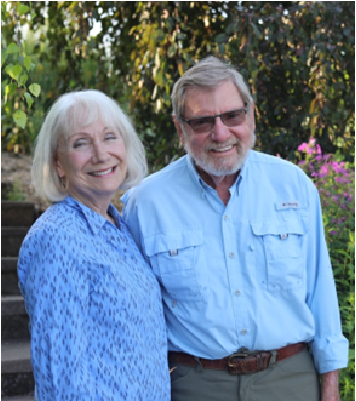 Bud and Vicky have a personal commitment to restoring environmental integrity to the lower Fox River and Green Bay ecosystem and the Great Lakes. They started working on it in the late 70s with the University of Wisconsin Sea Grant Program.
Bud and Vicky have a personal commitment to restoring environmental integrity to the lower Fox River and Green Bay ecosystem and the Great Lakes. They started working on it in the late 70s with the University of Wisconsin Sea Grant Program.
Bud joined the new University of Wisconsin-Green Bay in 1969 after completing his doctorate and began his research on coastal wetlands and bird populations in 1972.
Over his 30-year tenure at UWGB he taught several undergraduate courses in biology and ecology and developed and team-taught interdisciplinary graduate courses, including:
- Coastal Zone Management
- Wetland Ecology and Management
- Ecosystem management
- Environmental Science and Policy
During his tenure Bud had fifteen M.S. students whose theses dealt with some aspect of the ecology of freshwater coastal wetlands on Green Bay and bioaccumulation and effects of PCB’s on marsh nesting birds and emergent aquatic insects.
Vicky worked for the US Fish & Wildlife Service as a biologist and worked on the Tower Drive Bridge project to minimize destruction of important coastal wetlands and to require the first mitigation for wetland replacement in the bay watershed. She also documented diving duck populations and benthic macroinvertebrate communities for a US FWS Green Bay Estuary Study.
Historically Green Bay had been a major stopover for migrating waterfowl, particularly diving ducks. But southern Green Bay was so turbid with algae and suspended solids that sunlight was unable to penetrate the water column to support underwater plant foods which many waterfowl prefer. Low oxygen levels also impaired clams, snails and aquatic insects. A general lack of waterfowl foods resulted in declining numbers of waterfowl using Green Bay and a shift in migratory routes to other lakes in search of food to fuel their migration. These surveys became the subject of her graduate thesis and she continued to conduct periodic aerial surveys over the next 25 years which eventually documented a remarkable return of mussel-feeding diving ducks after the invasion of zebra mussels.
Bud was the University of Wisconsin Sea Grant Green Bay Subprogram Director from 1978-87 and Vicky served as the first UW Sea Grant Outreach Specialist in the Green Bay area from 1978 – 1980. Bud directed the program for 10 years and its research laid the foundation for development of restoration plans.
They also worked with the Great Lakes Fishery Commission, Great Lakes scientists, Green Bay resource managers and stakeholders to create the Great Lakes Ecosystem Restoration (GLER) case study that led to the first rehabilitation plan for Green Bay which in turn led to the first local “stakeholder” group dedicated to managing the bay as an ecosystem, known as the “Future of the Bay”. This early plan and stakeholder involvement helped to shape the later development and involvement of “stakeholders” in the Lower Green Bay and Fox River Remedial Action Plan (RAP) during 1986-1988.
Vicky joined the Wisconsin Department of Natural Resources (WDNR) in 1982 as the Northeast Region Water Resources Planner and Policy Analyst and was the Coordinator for the Fox River and Green Bay Remedial Action Plan for 13 years.
Vicky fostered development of four Technical and Citizen Advisory Committees to guide RAP preparation and implementation. An Outreach and Education Committee was also created to inform and engage the public. To this day, some thirty years later, the Outreach Committee, now known as the “Clean Bay Backers,” is still active and has organized field trips for elected officials and community leaders to showcase RAP projects that are “bringing back the Bay.”
Bud also played a pivotal role in the RAP. Bud chaired the RAP Science and Technical Advisory Committee for several years. His work led to phosphorus and suspended solids monitoring. This long-term data set has been vital in tracking water quality trends in response to remedial actions and introductions of invasive species like Dreissenid mussels.
The RAP was first completed in 1988, the first of 43 RAPs in the Great Lakes basin. The inclusive stakeholder approach was the first and became the norm.
The RAP was heavily focused on PCB remediation. It took nearly three decades of study of PCBs in Fox River and Green Bay sediments, water, fish and fish-eating birds before a cleanup plan was finally approved. Bud and Tim Kubiak (USFWS), with Sea Grant support, led a study of the impact of PCBs on reproduction of Forster’s terns nesting along Green Bay. The results of this study helped precipitate EPA funding for a Green Bay PCB Mass Balance Study which measured the loading, transport and fate of PCBs, lead and cadmium in the bay and estimated the potential results of remediation. Bud served as EPA’s onsite coordinator for the Study from 1989 to 1991, which was used to develop models that helped guide the eventual clean-up plan.
In 1997, Vicky was elected to the Board of Directors of the International Association for Great Lakes Research and served as Vice-president in 1998 and President in 1999. She also helped organize and co-chair IAGLR’s 2001 Great Lakes Research Conference in Green Bay in 2001.
After retirement in 1999, Bud along with several colleagues, graduate students and modest funding from the Oneida Nation developed a prototype TMDL for Phosphorous and Suspended Solids for the Lower Fox River Basin.
While working as a consultant in 2003 to Appleton Papers on PCB contamination, Bud worked with their CEO (Chris Gower) to establish the Lower Fox River Monitoring Program. Appleton Papers provided $1.2 Million over the first several years to establish the program which has trained high school biology and chemistry teachers to engage their students in collecting water quality and stream biology data.
Beginning in 2008 Vicky engaged Wisconsin marina owners and managers to establish a Wisconsin Clean Marina Program. The program trains marina managers and their staff and certifies “Clean Marinas” that adopt and maintain “best management practices” that protect water quality and aquatic habitat.
After her retirement from UW Sea Grant in 2012, Vicky continued to coordinate the program and work with marinas. Vicky remains on its Technical Advisory Committee. She is also a member of the UW Sea Grant Advisory Services Committee and the Green Bay National Estuary Research Reserve (NERR) Site Selection Committee.
In 2001, Bud joined the UW Sea Grant Advisory Council and served as Chair until 2014. He is still a member of the Council to date.
In 2010 Bud and Vicky were recognized with a Gold Star Lifetime Achievement Award for their conservation work on the bay and in 2021 received the first UW Sea Grant Actionable Science Award. In spring of 2020 Bud was elected to the Wisconsin Academy of Science, Arts and Letters for his science-based leadership.
Congratulations to Bud & Victoria Harris, WiWF 2021 Conservationists of the Year, and to all of this year’s honorees!
